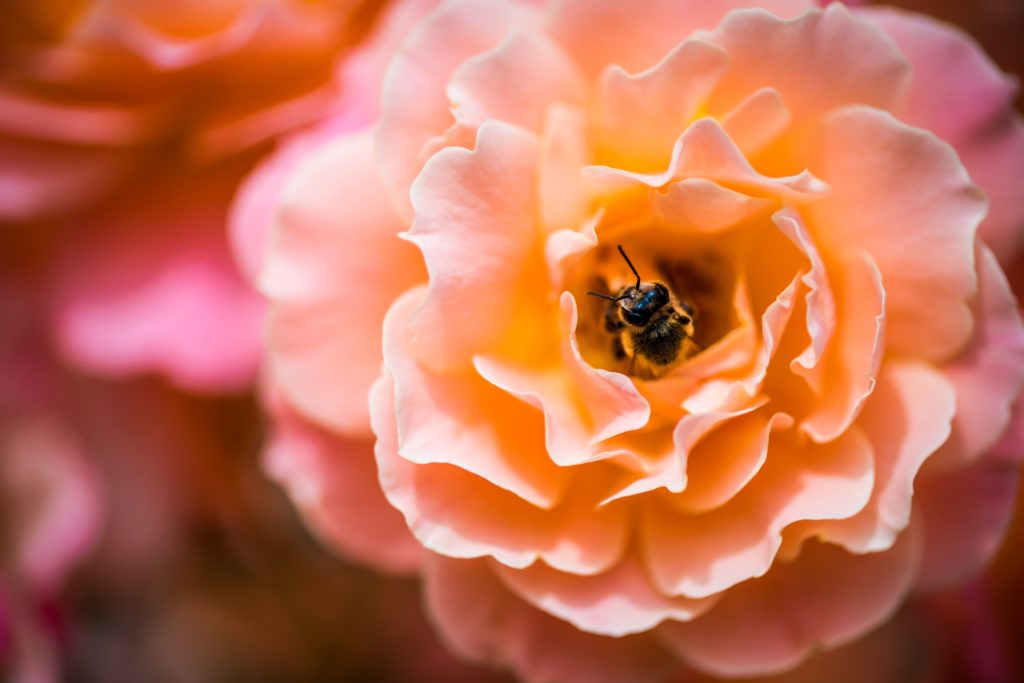I just made a note in my daily abbreviated journal: “Don’t think. Just do it!” Yesterday was a day off, and I spent it feeling futile because of what I experience as financial limitations in every direction.
Interestingly, and hilariously, if I could only look at it from that angle, this day of futility was perfectly illustrated by a tiny wasp.
In this house we rescue most insects and put them back outside, even knowing they’re probably back in the house before we are. This is especially true for pollinators, and we believe this particular species of wasp is solitary and does help with pollination. The problem is I have severe reactions to most insect venom, and a sting means a course of steroids and weeks of pain, swelling and itching.

When I saw the wasp in my upstairs attic space, my partner came up and caught it and released it outside. Twenty minutes later, a tiny wasp buzzed by me, making for the window I sit next to as I write. We caught it and released it. Twenty minutes later … you get the picture.
I got a roll of duct tape and started putting tape around the window air conditioner unit I’m using, as well as around every widening gap and crack in the old window trim, and tears in the screen.
In spite of my efforts, every twenty minutes or so a single wasp came from the direction of the window with the AC unit in it and headed toward the other window. Was it the same determined wasp, or a different one? Impossible to tell. It was certainly the same species.
I found and taped a gap in the ceiling where the chimney from the wood stove below my workspace rises through the attic. After the next flyby, I noticed a wide gap between the bottom of an exterior wall and the floor. We thought maybe there was a nest in the wall (this has happened in the past with yellow jackets in that place). My partner found an old piece of trim in the barn and we blocked that gap.
A few minutes later, another little wasp appeared.
It was surreal. It was maddening. Given the day I was having inside my head, it was bitterly funny.

It went on all day, as I spun my wheels and tried to get back on track and do some good writing, some submissions, draft this post — anything productive creatively. After the first three times, I caught the damn things (thing) myself. We released them (it) in different locations, thinking that might make a difference. I even tried shutting them (it) between the window and screen, at which point they (it) disappeared, either finding their (its) way out through the many gaps in the screen or coming back into the attic through cracks in the window frame.
You’re probably asking why we didn’t just kill them (it). When a stinging social insect is killed, it often releases a pheromone alerting the colony to defend itself. We were pretty sure this little creature was solitary, as we only saw one at a time, but if there is a nest in the wall and we killed the wasp inside the room, we didn’t want the whole colony boiling into my workspace.
Aside from that, we the people will not survive if we continue to wipe out all the pollinators.
It’s easy to take a life. I routinely smear mosquitoes and black flies with great glee, and we never meet a tick without taking its head off or drowning it in soapy water. I’m also not a fan of fleas, another ubiquitous little bloodsucker here in Maine that lives in the grass but is more than happy to relocate into the house via shoes, socks, pant legs and pets. We cherish our bat colony and our bug-eating birds, as well as the dragonflies and other creatures that help keep the insect population down.
That being said, these small stinging wasps are not aggressive, nor are they looking for blood. They don’t carry disease, as far as we know. They do pollinate and many species help clean up rotting tissue and offal. I don’t hold my sensitivity to their venom against them, and they sting as self-defense, not for fun, the way a yellow jacket will. It just didn’t seem necessary to kill them. It.

As the day ended, so did the flybys. I never did get going creatively. Some days are like that. I did some cleaning, some laundry, some reading, and went through an exercise routine. I thought about futility. I wondered what mysterious instinct was guiding those little wasps, or the one. How were they, or was it, getting in, and why did this seem like such a good place to be? Why the persistent action that took them (it) from the freedom of the summer world to buzz fruitlessly in an attic against a pane of glass?
Further, why do I myself so often feel sunk in futility? How do I step off into that mental morass, and how do I pull myself out of it? Dealing with the wasp(s) all day made visible the fruitlessness I occasionally feel internally. Hearing and seeing a wasp. Catching it with a plastic cup and a piece of cardboard. Going down the stairs and outside. Releasing it. Coming back up the stairs. Rinse and repeat every 20 minutes. There was something seductive about the inevitable futility of it all. Or do I mean the futile inevitability?
It seems to me I’m just as ineffective at times as that (or those) determined little insect(s), and just as mindlessly driven.
This morning I started by writing myself that note: “Don’t think. Just do it!” About twenty minutes into my submission process, a little wasp buzzed by me. I opened the window for it and trapped it between the closed window and the screen. Refusing to be distracted, I continued working. About twenty minutes later, a wasp flew by me, buzzed around the window for a couple of minutes, and then headed back towards the window with the AC in it. I stayed in my chair and went on working.
Sometime later I came to the surface, got up, and looked for the wasp(s). No sign of one, either trapped in the window or in the room. I have met my daily goal for submissions. It is not a day of futility. I hope the wasp(s) are on to better things as well. I still have no idea how they’re coming in. Or getting out.

© 2019 – 2022, Jenny Rose. All rights reserved.